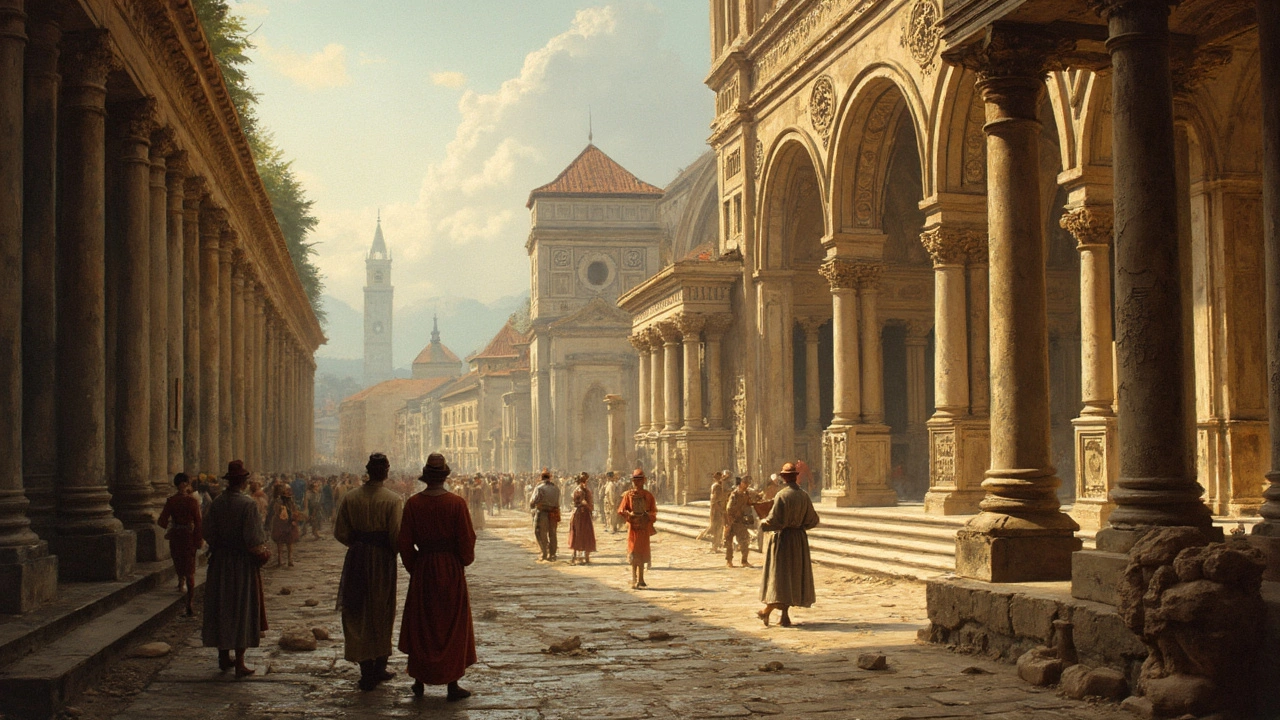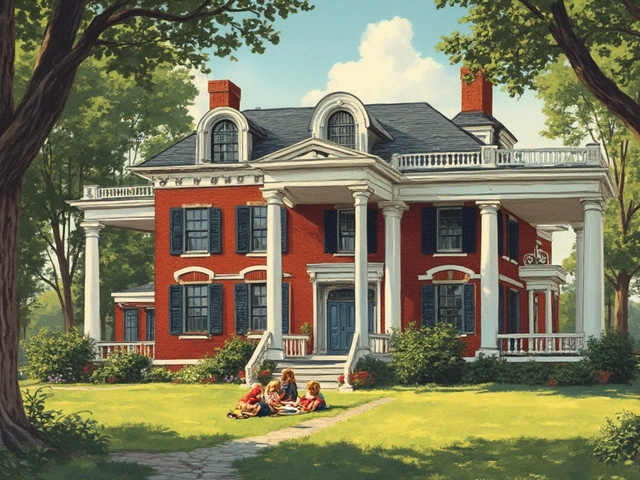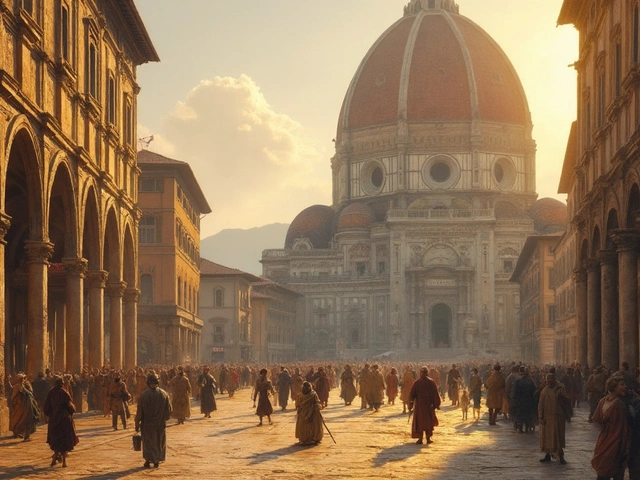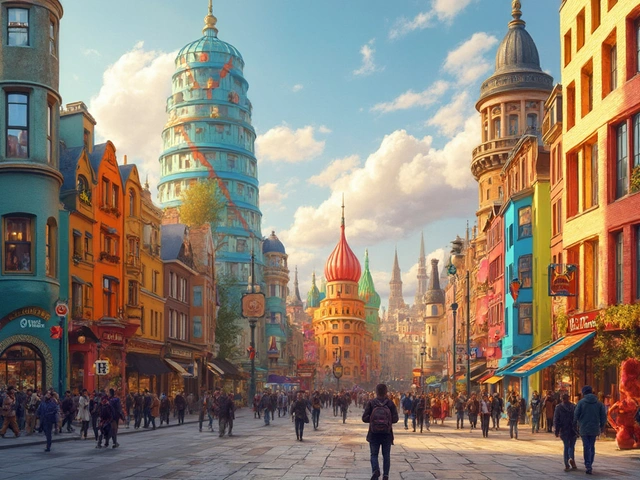If you’ve ever stared up at a church dome in Florence or wandered through the narrow streets of Rome and wondered, “Why does this place feel different?”—you’re probably feeling the impact of Renaissance architecture. These buildings aren’t just old for the sake of being old. They completely changed the way people put up walls, organized public spaces, and even thought about what a building should do.
Forget endless Gothic spires and crowded ornament. Renaissance architects loved rules—symmetry, geometry, columns that mean something, domes that don’t just look cool but hold up the world. Imagine folks back in the 1400s and 1500s suddenly caring a lot about clean lines, clear logic, and mixing art right into how buildings were designed. They thought architecture should make life better, not just impress your neighbors.
If you’re planning a trip to Italy, or even if you just want to sound smart talking about city landmarks, knowing a bit about Renaissance design helps you spot what’s legit. You’ll see arches and domes everywhere, but the Renaissance touch is all about balance, harmony, and clever tricks to make big buildings feel perfectly human-sized.
- What Makes Renaissance Architecture Stand Out
- The Big Names and Game-Changing Buildings
- Hidden Tricks: Recognizing Renaissance Details
- How Renaissance Ideas Shape Modern Cities
What Makes Renaissance Architecture Stand Out
Renaissance architecture just hits differently. Unlike the pointy, sometimes over-the-top Gothic style that came before, these buildings swing back to simpler forms and more human-friendly spaces. The big idea was to take what ancient Romans and Greeks did, then boost it with new math and creativity. Suddenly, architects cared about things like "Does this building make sense?" and "Does it feel balanced?"
One of the biggest changes was the return to symmetry. Buildings from this era often have a front door that lines up with everything else, windows evenly spaced, and columns placed with math-level precision. The famous dome of Florence Cathedral, designed by Filippo Brunelleschi, blew everyone's minds back in the 1400s, using new engineering tricks. And the real kicker? Brunelleschi did it without any support beams holding up the dome from the inside—a huge deal for the time.
Here's what sets renaissance architecture apart on the street:
- Symmetry and Proportion: Doors, windows, and columns are laid out to match both sides. Architects used simple math ratios (like 1:2 or 2:3) so everything looked balanced.
- Domes and Arches: Instead of heavy roofs, they went for domes that felt lighter and arches that spanned more space without all the clutter.
- Columns and Pilasters: These weren’t just for show—they helped organize the building and hinted back to Roman times.
- Interaction with Art: You get sculptures, frescoes, and big windows bringing light inside so you could actually see the artwork.
| Feature | Gothic | Renaissance |
|---|---|---|
| Columns | Rare or hidden | Prominent, decorative |
| Windows | Stained glass, small or tall | Larger, round or square |
| Domes | Very rare | Widespread use |
| Symmetry | Not a focus | Core principle |
The reason these things matter isn’t just about looks—they’re about how people use and move through a space. Renaissance architects wanted you to feel good standing in a plaza, walking under an arch, or stepping inside a sunlit church. That shift made cities like Florence, Rome, and Venice famous, and the ripple effects are still everywhere in downtown squares around the world.
The Big Names and Game-Changing Buildings
Renaissance architecture doesn’t happen by magic—it’s the result of a few bold minds who decided buildings should look and function differently. If you’re looking for the roots of this style, you start in Florence. That’s where Filippo Brunelleschi, basically the rockstar of Renaissance building, pulled off something no one else could: he designed and built the dome for Florence’s Santa Maria del Fiore (the Duomo). Here’s the wild part—nobody knew how to put a dome that big on that cathedral. Brunelleschi made it work without the usual scaffolding, using a double shell and herringbone brickwork. That trick still blows architects’ minds today.
The next big name is Leon Battista Alberti. He’s the guy who gave us the idea that buildings should look clear and logical, kind of like a good essay. His church designs, like Sant’Andrea in Mantua, are all about those bold columns, rounded arches, and facades that stick in your head the moment you see them.
Don’t forget Donato Bramante. When he got his hands on St. Peter’s Basilica in Rome, he kicked off a rebuild that shaped the look of big churches across Europe. Even Michelangelo—yep, the guy who painted the Sistine Chapel ceiling—jumped in and helped finish St. Peter’s massive dome later on.
- Florence Cathedral Dome (Brunelleschi): First massive dome in Europe since ancient Rome, still the largest masonry dome in the world.
- Palazzo Rucellai (Alberti): One of the earliest Renaissance-style palaces, with that famous layered facade.
- Villa Rotonda (Palladio): Andrea Palladio followed in the footsteps of earlier architects, making country houses that still inspire modern suburban homes.
Check out these quick facts about the major game-changers:
| Architect | Signature Work | Location | Year Started |
|---|---|---|---|
| Filippo Brunelleschi | Florence Cathedral Dome | Florence | 1420 |
| Leon Battista Alberti | Sant’Andrea | Mantua | 1470 |
| Donato Bramante | St. Peter’s Basilica (initial plan) | Rome | 1506 |
| Andrea Palladio | Villa Rotonda | Vicenza | 1567 |
What’s key is how these buildings aren’t just nice to look at. They changed how people thought a building could work: big open spaces, lots of natural light, and a sense of order that you can still spot in city centers and even modern homes. Spot any columns, domes, or perfect squares in your own city? Chances are pretty good they’re inspired by these Renaissance trailblazers.
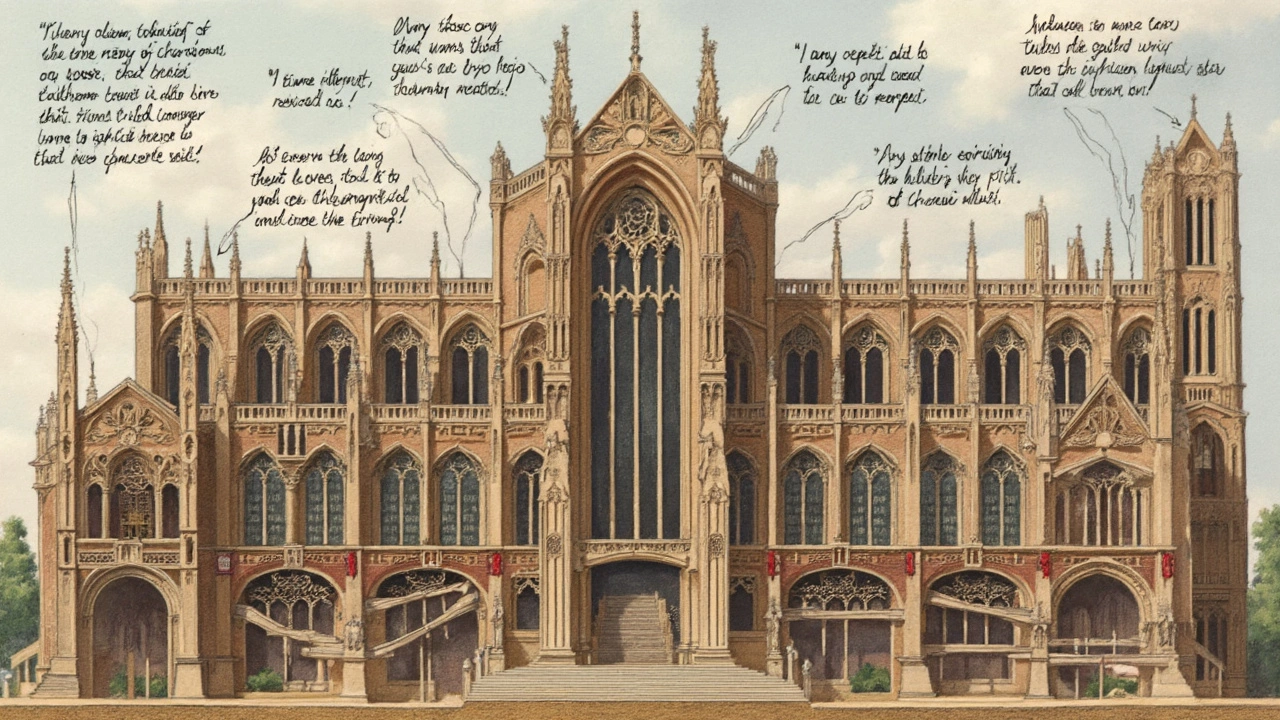
Hidden Tricks: Recognizing Renaissance Details
Trying to spot real renaissance architecture is a lot easier when you know a couple of the tricks the old masters used. They followed rules, but with so much attention to detail that even the simplest doorway can seem special. Here’s how you can tell if you're looking at the real deal.
First, check for symmetry. These architects were sticklers for balanced spaces, so if windows and doors are lined up with almost military precision—left mirrors right—you’re on to something. Take Brunelleschi’s Ospedale degli Innocenti in Florence. The columns line up cleanly, and all the arches are evenly spaced.
Look for classic columns too—Doric, Ionic, or Corinthian styles, borrowed straight from ancient Rome and Greece. But here’s the twist: Renaissance builders often mixed these up, or stacked them in clever ways to show they knew their history but could do it better. You’ll see this combo trick in buildings like the Palazzo Rucellai, which stacks different styles on each level.
Domes get a ton of attention, and for good reason. Before the Renaissance, big domes were super rare in Western Europe. Then Filippo Brunelleschi showed off his double shell design on the Florence Cathedral, and suddenly everyone wanted a dramatic dome centerpiece. This wasn’t just for show—the design shifted how buildings could be used and allowed wide open spaces inside.
Don’t forget the windows. Renaissance people liked to bring in light, and so you’ll see square or round windows in neat, repeated rows, sometimes framed with stone moldings or topped by triangle-shaped pediments. St. Peter’s Basilica is jammed with these details if you look up close.
- Check if facades (the front face of the building) look flat and organized, instead of having a jumble of decorations.
- Spot repeating shapes and patterns—like circles and squares that show someone measured everything out carefully.
- See if the decoration focuses around key points like doors or windows, not everywhere. That’s a Renaissance trick to make certain spots stand out.
- Keep an eye out for clever use of perspective, especially inside churches—the floors, ceilings, and walls might use patterns that create the illusion of depth or perfect proportions.
With a little practice, these tricks make it easy to spot real Renaissance buildings—even when they’re hiding in plain sight on busy city streets.
How Renaissance Ideas Shape Modern Cities
Peek behind many big city skylines, and you’ll spot influences straight from the Renaissance playbook. Urban planners today keep swiping ideas from those Italian thinkers, especially when it comes to city layout, public squares, and how buildings work together.
One of the biggest shifts during the Renaissance was the move toward renaissance architecture that made everything feel more organized. That’s why you see so many grid-like neighborhoods in newer parts of Europe and even in American cities. Streets often lead to open plazas (think city squares or piazzas), all about letting crowds gather and breathe. This layout makes places feel welcoming, not boxed in, and it’s hard to imagine modern city life without these community hubs.
Let’s talk windows, facades, and proportions. Renaissance architects were all about using mathematical ratios so things lined up perfectly. The golden ratio—about 1.618 to 1—pops up in both ancient and new buildings. If a city hall or museum looks weirdly pleasing, odds are the designer followed these old rules. You’ll also see columns and arches inspired by Florence in everything from courthouses to high schools today.
It’s not just Italy. Look at Washington D.C. or Paris. Those grand boulevards, aligned monuments, and symmetrical parks? Borrowed from Renaissance city planning. In 2024, more than half the world’s population lives in urban areas, and planners regularly go back to Renaissance ideas to solve crowding and traffic problems. City squares help with foot traffic and boost local shops—Milan's Piazza del Duomo, for example, attracts millions each year.
Here’s a quick comparison showing where you’ll spot direct Renaissance influences versus their modern twist:
| Renaissance Feature | Modern City Example |
|---|---|
| Central Plaza / Piazza | Union Square, New York City |
| Grid Layout | Barcelona’s Eixample District |
| Symmetrically Laid Out Buildings | National Mall, Washington D.C. |
| Arched Facades | Palace of Westminster, London |
Want to spot more Renaissance tricks? Next time you’re in a city center, check if the public spaces are set up for gatherings and if the buildings use arches, domes, or clear lines. It’s no accident—Renaissance blueprints left their fingerprints everywhere.

